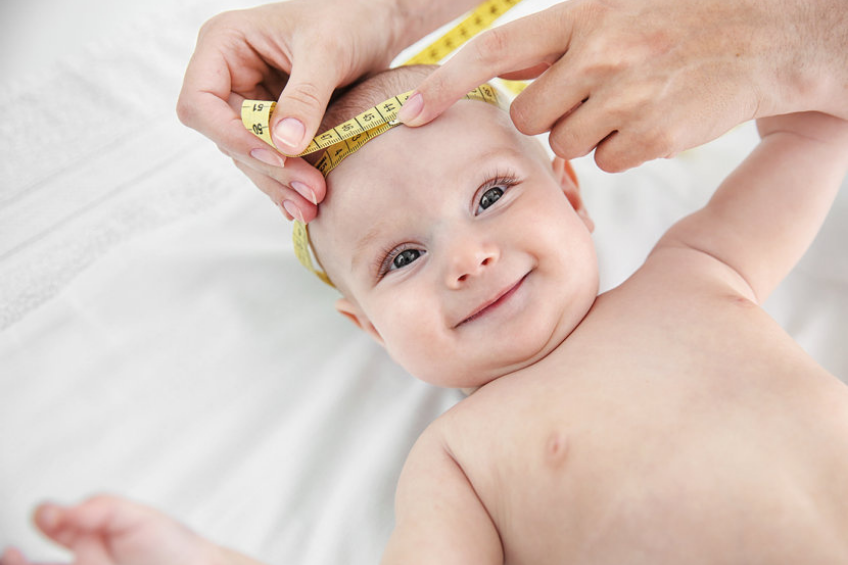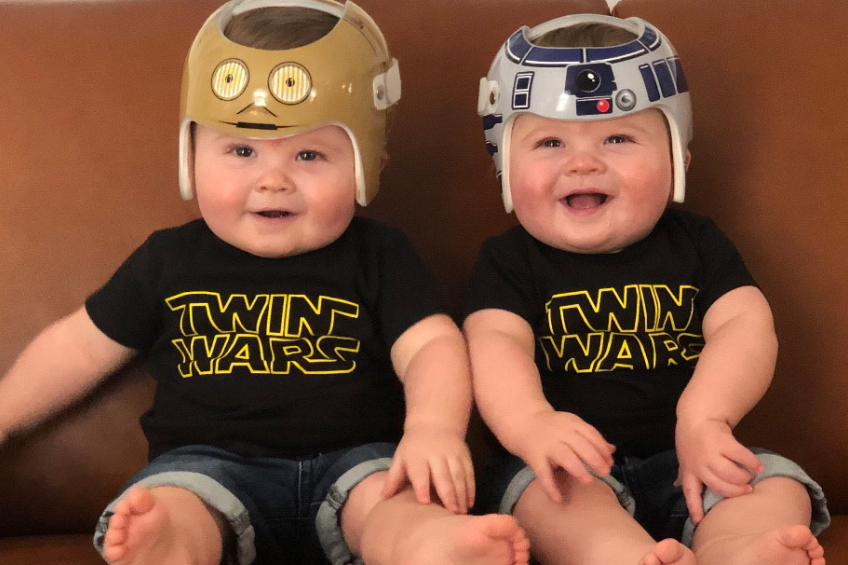Babies’ Head Shapes & Their Consequences
/
Babies’ heads come in all different sizes and shapes and most of the time this parameter is insignificant. For example, my sister’s son was born with a large head. When her pediatrician asked her if there are other men in the family with large heads her immediate answer was no.

However, after discussing this subject with me I clued her in on the fact that large heads are common on our father’s side of the family. Since she is the youngest in our family most of the male relatives are adults who are quite older than she. Large heads usually even out by adulthood so she had no idea that a big head ran in our paternal side of the family. Her baby is all grown up now with a family of his own and his body size has caught up with his head size normally. Anytime a baby displays a symptom that seems a bit different the parents get nervous. Many times, the funny head shape is due to the baby’s passage through the birth canal. If the baby’s head is large and the mother’s canal is not, the head shape can change temporarily. Yes, the head is soft and pliable at this stage of the new baby’s life, and this is a good thing. If this flexibility was not present the baby could get stuck on the way down out of the birth canal. This is exactly what happened to my grandson. His head was large due to family genes, and he would not have made it down if not for the miracle that the bones are still soft and pliable at birth. Yes, he was an egghead for a while, but his head straightened out on its own. The word egghead used to be synonymous with intelligence. There is research that has shown that a person with a larger brain is smarter than his counterpart with a smaller brain. In the past, egghead used to connote an intellectual. The jury is still out on this strange phenomenon of the egg-shaped head.
Macrocephaly
The clinical term for a large baby head is called macrocephaly. When a baby’s head falls into the 98th percentile of measurements this condition is named macrocephaly. That means that the baby’s head is larger than 98% of other babies in his age range. When your newborn enters the pediatrician’s office for the first time, he or she will have other measurements taken other than height and weight and one of them is measuring the circumference of the head. If a large head is in the family, it is commonly called, “benign familial macrocephaly”. As long as the soft spots or fontanelles are normal there is nothing further to do at this point other than come back if other symptoms appear.
Here are some symptoms to be concerned about:
1) If the soft spot bulges
2) Unexplained crying and vomiting
3) Eyes not focusing correctly
4) Delays in physical or mental development
The above symptoms may be signs that there is too much fluid in the skull or enlarged brain. Most times an MRI or CT scan will rule out any abnormalities. When there is too much fluid on the brain it is called macrocephaly due to hydrocephalus. Most of the time a baby will outgrow this condition on its own unless the pressure of the fluid is too much, and surgery will solve this problem. Generally, this problem is alleviated by time alone.
Craniosynostosis
When your baby journeys down the birth canal, a soft head makes the miracle of birth possible. Since the bones are still soft after birth, they are not fused together so they will be able to stretch coming down the birth canal. In rare occasions the baby’s soft spot will close prematurely which causes an unusual head shape. You will be able to spot the symptoms of craniosynostosis by noticing the absence of a soft spot on the baby’s head. This will cause the growth of the head to be delayed. In fact, there are four distinct types of head shapes that characterize craniosynostosis.
1) A flat forehead -Coronal Synostosis is when one of the coronal sutures closes too early. There are two of these sutures, one and right and one on the left side of the head. These link the frontal bone behind the forehead to two bones on the top. The forehead looks flatter and the head wider and shorter with this condition.
2) Long and narrow head-Sagittal Synostosis is the most common type of this condition, narrowing the shape of the baby’s head. The sagittal suture closes earlier, causing the brain to extend to the front and back of the head creating an extended shaping.
3) Metopic Synostosis- triangle shaped head is caused by the early closure of the metopic suture running on the top of the head. While the front of the skull is narrow the back is broad.
4) Lambdoid Synostosis- the back of the head is flat. This one is a bit tricky to diagnose since it mimics flat head syndrome or plagiocephaly. If the lambdoid suture at the back of the head closes too early, it will restrain the head from extending backward. Your doctor will advise you to go to a cranial specialist to determine which condition is present. If it is plagiocephaly then physical therapy and a cranial helmet will solve the problem if caught early. For Lambdoid Synostosis surgery may be required. After the surgery for all four of these types of craniosynostosis a head shaping helmet will be prescribed to lead the skull into a normal head shape.
It’s scary when a parent notices a deformation anywhere on their adorable baby’s head. As long as the fontanel or soft spot is present there is a good chance that the distortion is cosmetic. That is not to say that it should be ignored. Quite the opposite. If the baby exhibits flatness on any part of the head, be it the side or back or any other part of the head, he or she should be seen as soon as possible by a cranial specialist. The baby will be gently examined, and number rated to see if the distortion is significant enough to be treated.

Cranial helmet treatment along with physical therapy can alleviate the issue within a few months. Plagiocephaly or flat head is treated with a helmet that is worn twenty three out of twenty-four hours a day. Before being fitted for the helmet the baby’s head is put through a special scanning mechanism which will assure the specialist of an individual fit of the helmet. This must be done in person and most cities have cranial therapy centers locally. In smaller cities the parents may have to travel with the baby to be fitted in a major city. This is very worthwhile even if the parents must sacrifice time and money to have it done. The only tragedy with misshapen heads is when nothing is being done about it till it is too late. Most cranial helmets are fitted by four months of age.
The above condition should not be confused with other more serious ones such as craniosynostosis and hydrocephalus which will be treated more invasively. There are two types of surgeries for craniosynostosis.
The first is endoscopic which is done between three to six months of age (like the age for cranial helmet therapy). This procedure requires a tiny incision and only a short hospital stay. After the surgery the baby will be fitted with a helmet to assure correct head reshaping.
The second type of surgery is called cranial vault remodeling which is a riskier operation. This surgery is necessary when the baby is older than six months if the diagnosis was delayed. The only advantage over the endoscopic method is that the baby will not be required to wear a helmet post-surgery. However, the baby will have to stay in the intensive care unit for one to two nights and then be hospitalized for up to four days. Don’t be tempted by this risky operation just because a helmet is not required. The endoscopic method is safer, and it is worthwhile even when the baby will be wearing a helmet post-surgery. Most babies get used to the helmet after a week.
As the saying goes, “time is of the essence” and this is especially true with your baby’s precious head. The earlier the head deformity is diagnosed the easier it is to treat. Helmets are most successful when treatment begins between the ages of four and twelve months when the skull is still soft enough to mold. After one year, the skull bones have been fused together and the bones have hardened. Parents who hesitated or were misguided by well-meaning relatives or even negligent doctors look back with regret at how easy it would have been to correct the problem if it would have been treated at the right time.

Cranial Therapy Centers is the only early interventions cranial center in the United States which provides both helmet and manual therapy treatment. We are American Board for Certification in Orthotics, Prosthetics and Pedorthics Facility. Visit us in Lakewood NJ, at 1352 River Ave Unit 14, Lakewood NJ, 08701 or in Teaneck NJ at 1086 Teaneck Road Suite 3F, Teaneck, NJ 07666. You can also email us info@cranialtherapycenters.com
